

Liberté, Egalité, Fraternité and Total War



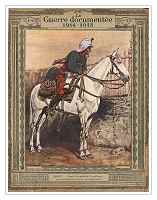
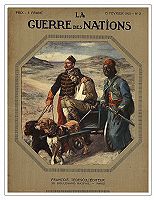

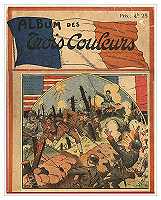
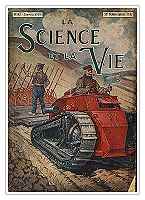
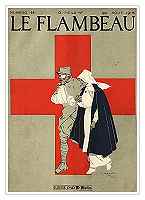
In general it would appear that while British publishers thought nothing of creating whole new magazines from skratch dealing with war news, French publishers were more apt to transform already existing titles of newsmagazines into periodicals dealing with the great conflict raging in Europe and around the world. One of the most notable examples is 'l'Illustration', a venerable, if somewhat dull and stuffy pre-war magazine. The Great War issues of this magazine are splendid publications both from an artistic as well as from a historical view.
Others, such as 'Lectures Pour Tous' or 'Les Annales' both a sort of 'Reader's Digest' cum ''Argosy'/'All Story' publication, devoted about half of their pages to war related fiction and fact.
There were also specific war-related children's magazines such as 'Les Trois Couleurs', which featured comic strips, stories and illustrations for a youthful and patriotic public. And Paris being renowned as the capital of vice and sin, it could not be otherwise than naughty, racy publications such as 'La Vie Parisienne', 'Le Rire', 'Le Sourire', 'La Vie de Paris', 'Frou-frou' etc. all adapated themselves to war-time conditions. A new publication combining humor, satire, patriotism and a vague all-knowing sense of the naughtiness of the world was launched during the war years. It was called 'La Baionnette' and featured color illustrations by many of the more renowned French illustrators of the day, such as Hérouard and Le Rallic. Many issues were built up around a single theme such as for instance, 'Going on Leave', 'Trench Philosophers', 'Women at Work', 'Life in Cantonnements' and so on.
On the whole, French publications mirrored the opinion that the Great War was a struggle for national survival and most drew heavily on both patriotic as well as on national sentiments intent on exacting revenge against the German invaders. Even unlikely general knowledge or literary publications, printed entire issues after issue with nothing but war-related articles and illustrations. Photographic subject-matter was chosen accordingly as well. Of all the belligerent countries it can justifiably be argued that French publications were in the forefront when it came to publishing un-embelished photographs of modern warfare. While there was an understandable reluctance to show their own casualties, French magazines thought nothing of showing a multitude of dead German soldiers, often in rather gruesome condition.
This contrasts quite markedly with the general German journalistic practice of portraying the Great War as a large-scale building expedition into foreign countries or as a huge camping-trip for the Imperial armies. Clearly French editors knew where their duty lay : to portray Germans as uncivilized militaristic brutes and savages.
- A war-time storefront in Switzerland offering an abundance of newsmagazines.
- 'Le Miroir', 'J'ai Vu', 'Die Woche' and 'the Illustrated War News' among others
- all in competition for custom. A publication for every shade of opinion.
|
|
|
|
|
|
|
|
|
|
|
|
|
|
|
|
|
|
|
|
||
|
||
|
|
|
|
|
|
|
Children's Magazines
|
|
|
Le Cri-Cri |
|
|
|
|
|
|
|
|
|
|
|
Post-War Magazines
|
|
|

Neutral News Magazines
 Sonntagsblatt der Vaterland |
|
|
|
l'Image |
|
Spanish Magazines

Neutral News Magazines